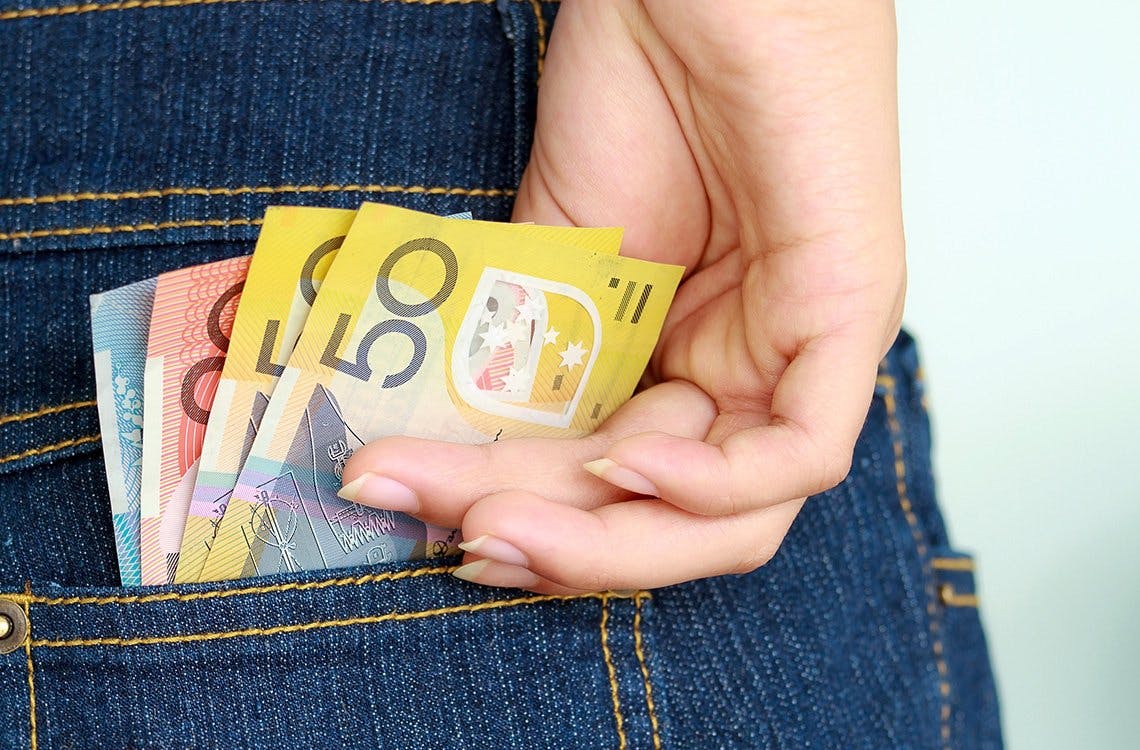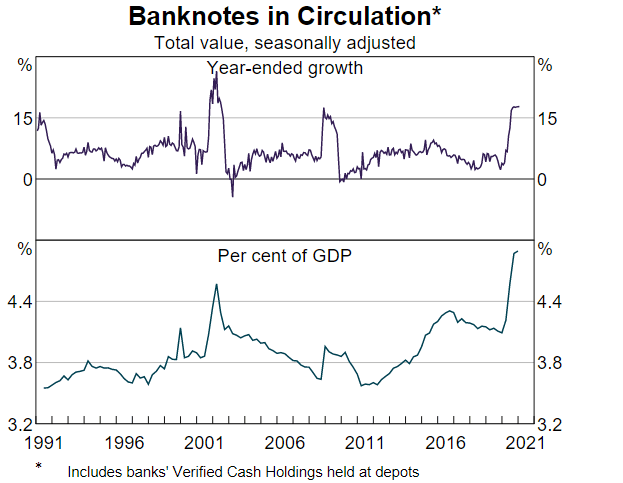
Australia Sees ‘Extraordinarily High’ Cash Demand
The Reserve Bank of Australia (RBA) has reported ‘extraordinarily high’ demand for banknotes, starting mid-March 2020 when containment measures were first imposed. The value of notes in circulation rose 17.1 percent between then and February 2021, to a total of $96.3 billion.
The ‘Cash Demand During COVID-19’ report notes that circulating cash has typically grown by around five percent annually, for the past decade. The 2020 jump has meant that, measured as a percentage of Australia’s GDP, banknotes in circulation have reached a historic high of 4.9 percent.

Sources: The Australian Bureau of Statistics and the Reserve Bank of Australia
The rise in cash demand coincided with an overall decline in its use for day-to-day transactions, with the pandemic shifting its role to that of value storage. As such, demand was highest for large denominations ($50 and $100 notes) with around 70 percent of the volume of banknotes issued since mid-March 2020 being $50s and 20 percent being $100s.
The average size of ATM withdrawals also grew, despite the number of withdrawals decreasing as cash machines and bank branches saw widespread closures. The RBA observes this decline in access was largely temporary and driven by lockdown restrictions that led to reduced trading hours.
According to the Australian Bureau of Statistics, a third of Australians shifted to online shopping, and alongside a decline in cash use, both in-person and card transactions declined sharply in March and April 2020, which the RBA suggests points to lower household spending at that time. In-person transactions had returned to pre-2020 levels by late 2020.
The RBA found that 23 percent of people’s in-person spending was conducted in cash, according to their most recent Online Banknotes Survey, conducted in October 2020. They also discovered that people living in regional and non-metropolitan areas had a significantly higher preference for using cash than those in metropolitan areas, and were more likely to have used cash recently. Cash acceptance was found to be similar across metropolitan and regional areas.
